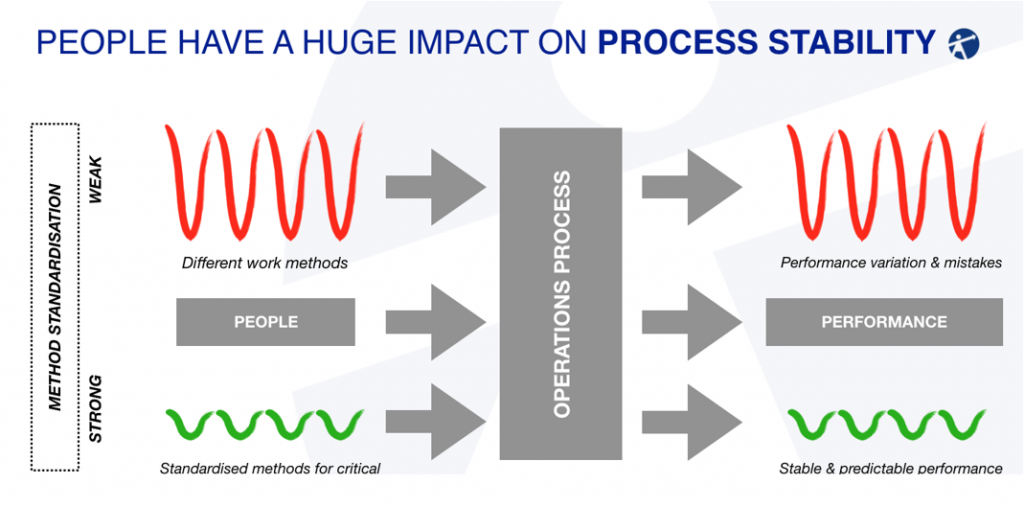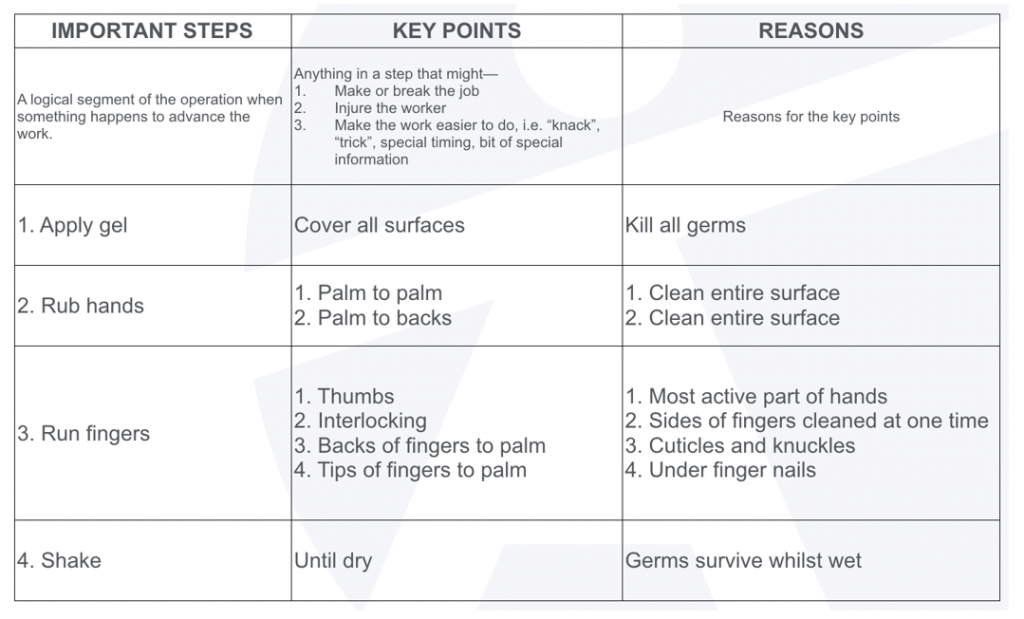Training Within Industry
Training Within Industry – TWI – is often referred to as the forerunner of contemporary lean thinking and while developed in the US over 70 years ago to support the World War Two war effort, it is still practised by Toyota. In recent years there has been a renewed interest in TWI and a resurgence in the application of TWI methods in organisations, notably led by the TWI Institute.
TWI originally aimed to rapidly train and develop new staff in order to achieve an increase in productivity, quality and occupational safety. This programme included the development of three managerial skills, considered necessary for leaders and workers:
- The ability to instruct employees
- The ability to improve working methods
- The ability to build good relations with and lead employees
This article focuses on the Job Instruction element of TWI, which helps connect the written work standard with the actual practice on the shop floor and teaches the technique of delivering effective on-the-job training that ensures people reliably perform a task exactly the way it should be done to get consistently good results.
Introduction
TWI Job Instruction is considered a key ingredient for successful operations excellence or lean programme. If people play a significant role in your processes, you will probably need to invest a lot of effort and resources on standardising the methods of how work is done, if you want your process improvement work to progress at speed and deliver results.
Most lean initiatives involve a lot of talk about the need to standardise work methods. Lean leaders realise that without ‘standardisation in place’, improvement won’t stick. Without standardisation, the new method you have just developed with your Kaizen team is just one of many, many ways of building your product or delivering your service. Without standardisation your process will deliver big variation in quality, output and time.
Therefore, standardisation is not just one of the things we ‘do’ as we strive for operations excellence. Rather, it should be the heart of our our operations excellence practice, the driver of improvement – not just the end result.
But despite knowing that standardisation is critical, leaders often struggle to do standardisation for real.
Are we doing enough work on standardisation?
As a result of ISO and other certification requirements, most businesses have work standards for their main processes defined on paper, including quality control plans, safety procedures, SOPs and work instructions.
But what we say we do and what actually happens on the process often does not quite match up. In many processes, people are still one of the most critical inputs. If you look at the detail in the Gemba, you will find plenty of differences in the way they do the work across shifts, lines and individuals. Variation in the way the work is done translates directly into output variation and mistakes. Squeezing method variation is therefore, arguably, the most important thing operations leaders can do to create stable, predictable process performance.
How can we bridge this gap?
Generally, work method variation can be traced back to faulty on-the-job training and follow up:
- Training content might not be specified enough,
- Training is too complex or delivered poorly.
- Follow up is difficult or not done.
This automatically leads to method variation on the process and affects outcomes. Therefore, if we want to standardise work methods, we need to improve the way we train and follow up on the training. We need a simple and reliable training system.
Training within Industry (TWI), a leadership skills programme developed over 70 years ago and still practised by Toyota, provides an answer. Its Job Instruction (TWI JI) program helps us connect the written work standard with the actual practice on the shop floor. JI teaches the technique of delivering effective on-the-job training that ensures people reliably perform a task exactly the way it should be done to get consistently good results.
TWI JI specifies a simple, robust 4 Step method of training that raises our trainers’ training skill. It also provides a system for specifying training content in a way that ensures the critical aspects of each job are understood and practised reliably by trainers and trainees.
The Job Instruction Breakdown captures Important Steps, Key Points and Reasons for the key points – thus specifying clearly and succinctly the ‘best method we know today’ of performing a task.
TWI Job Instruction enables us to squeeze variation out of our training and follow up process, which leads to consistency in work methods applied in the Gemba. And consistent work methods reduce variability and mistakes.
How can I get my people to practice TWI Job Instruction?
Despite TWI JI’s apparent simplicity, businesses introducing TWI Job Instruction require good training and practice with coaching from an experienced practitioner to accelerate their learning curve and quickly get results from TWI.
TWI classes are standardised in content and schedule, and all aspiring TWI trainers go through a rigorous program of training and practice with the TWI Institute before achieving certification to train. This ensures the quality of training delivery and the necessary expertise to provide practical guidance as people start applying TWI on the shop-floor.
Whilst businesses generally start with external training provided by the TWI Institute or one of its authorised partners, after completion of the first successful pilot projects oftentimes they quickly move on to bringing the TWI training capability in-house by making use of the TWI Institute Train-the-Trainer program. This enables them to quickly train and involve a critical number of their staff in the program and, with this, consolidate TWI JI as the new method of on-the-job training and work-method standardisation.
Where can I find out more about TWI Job Instruction?
To find out more about TWI Job Instruction please visit the websites www.twi-institute.org & www.supervisor-academy.org






